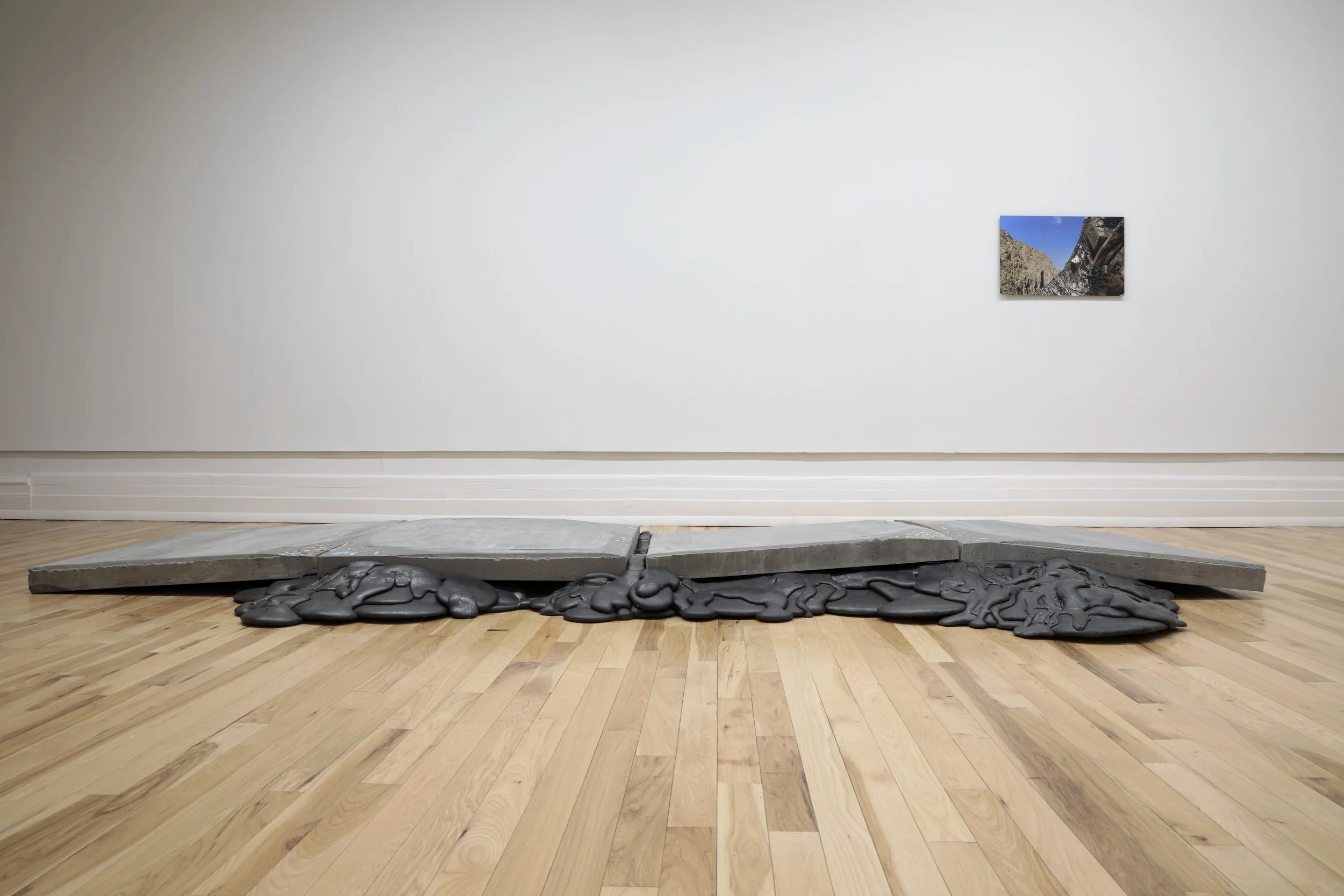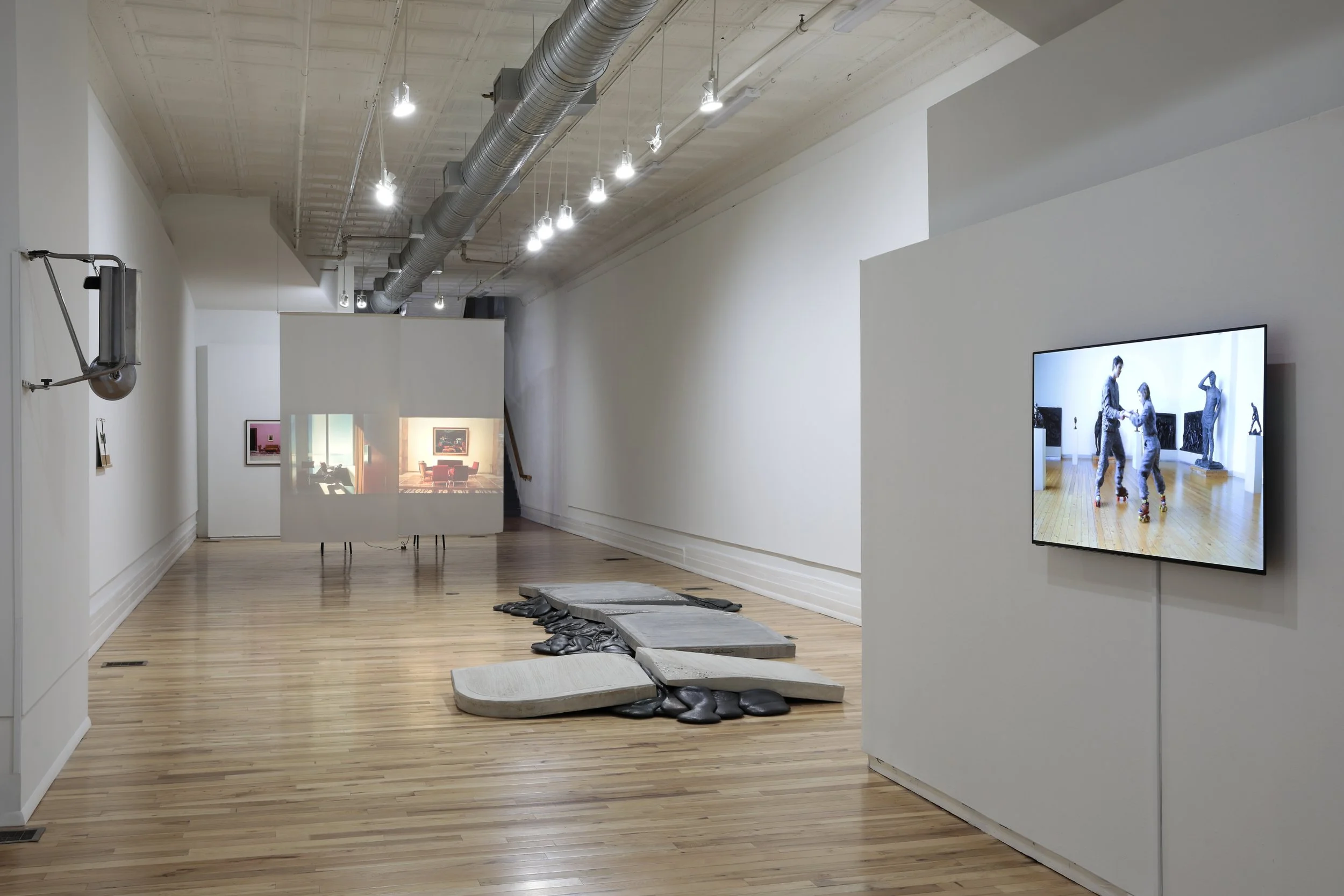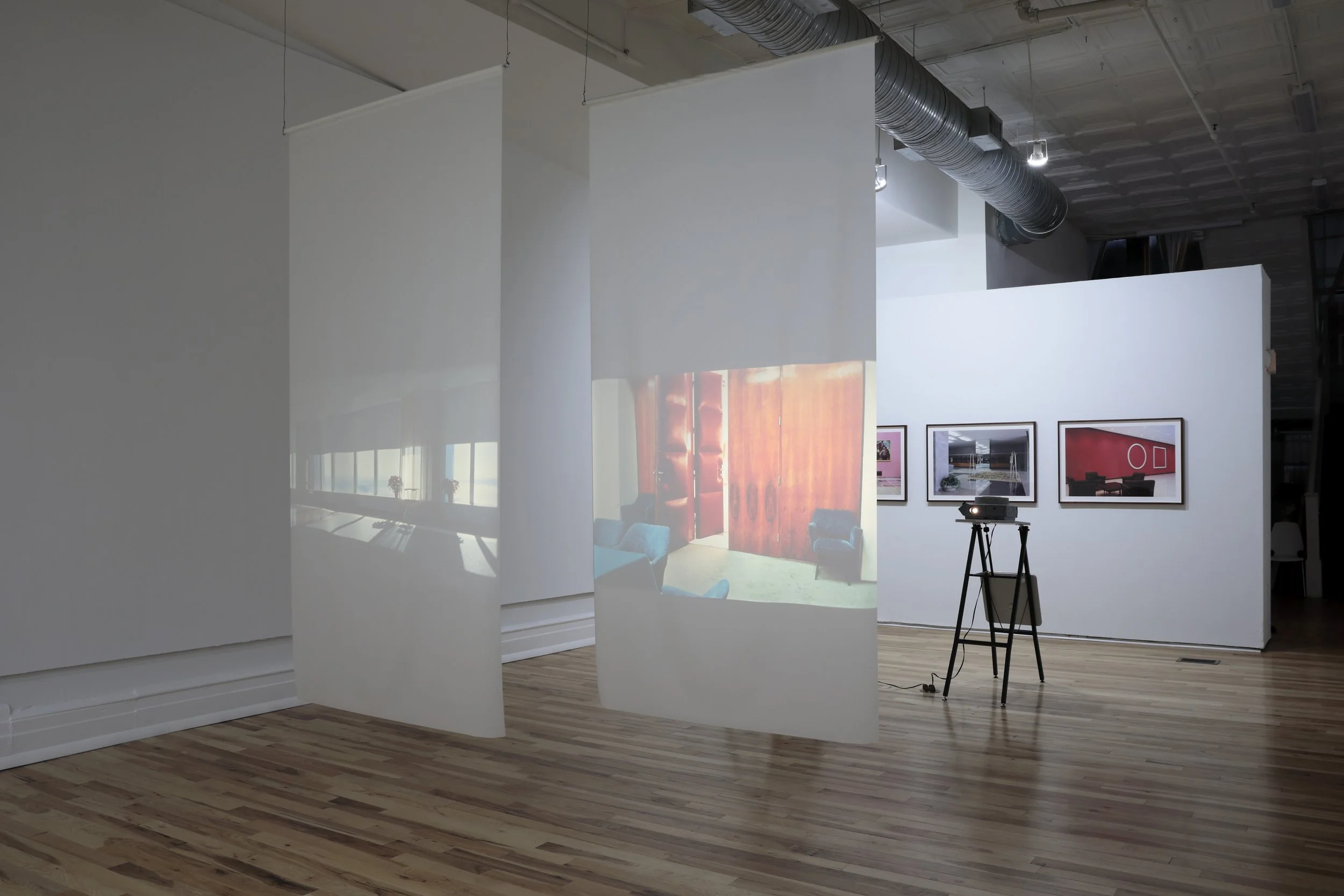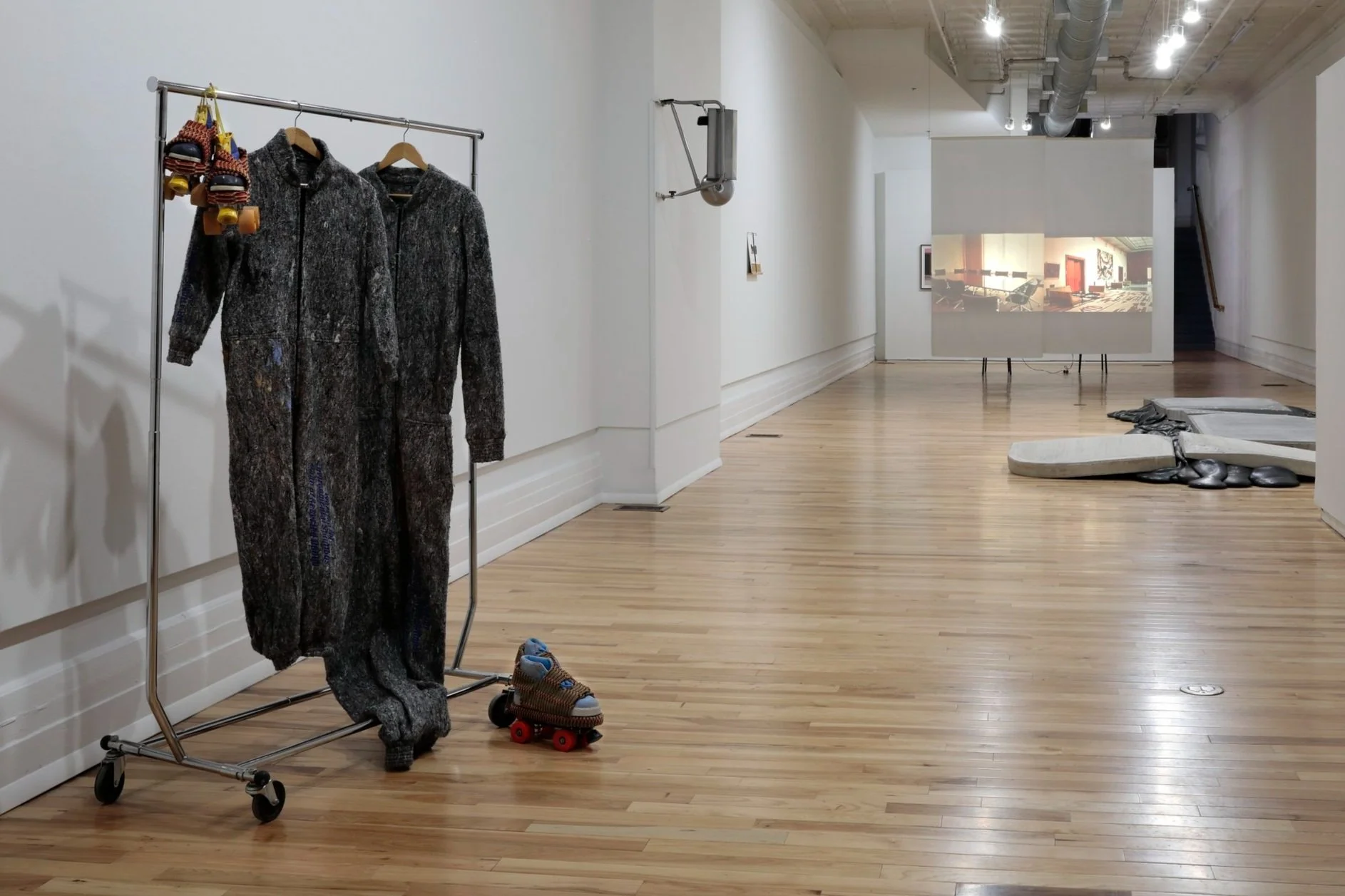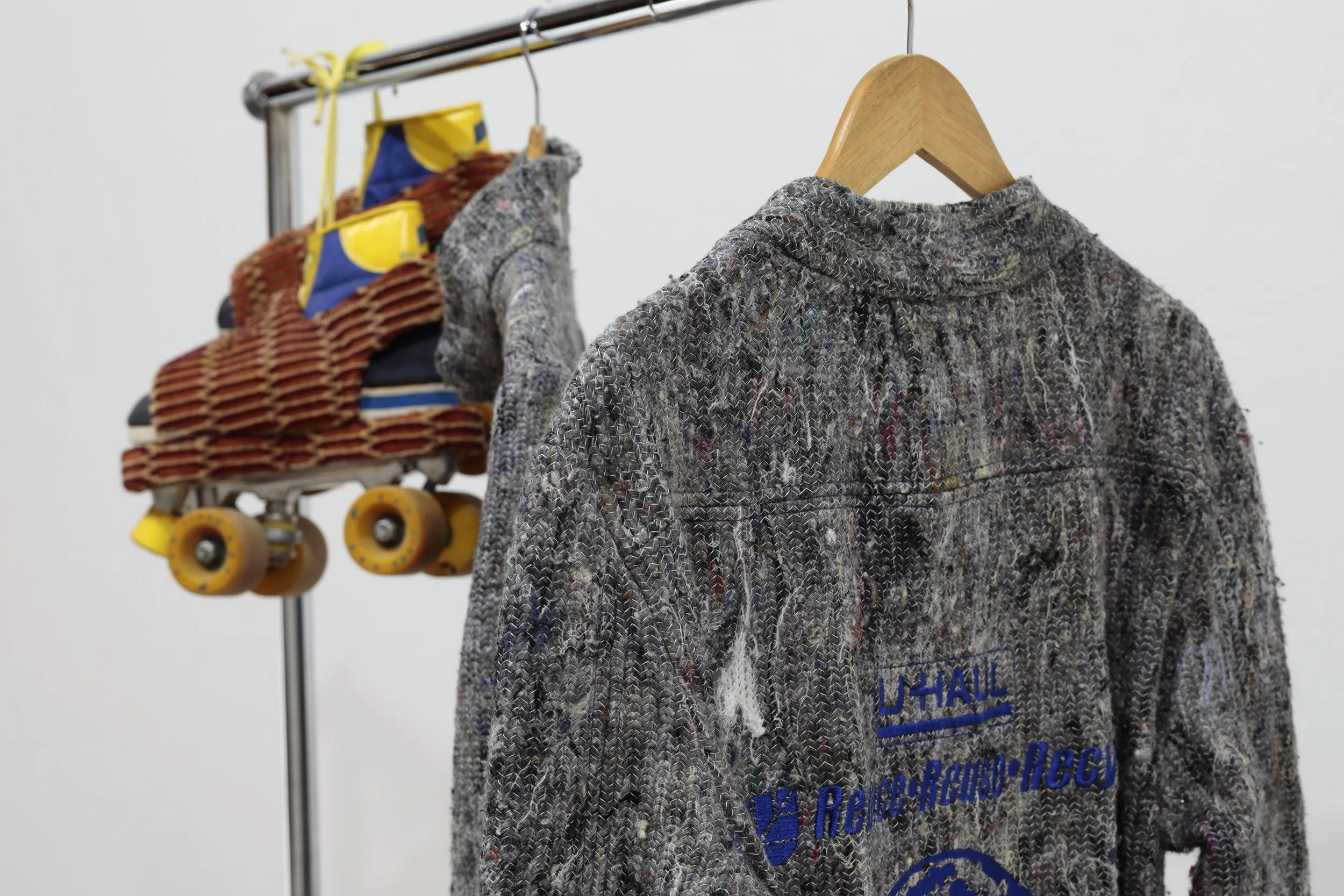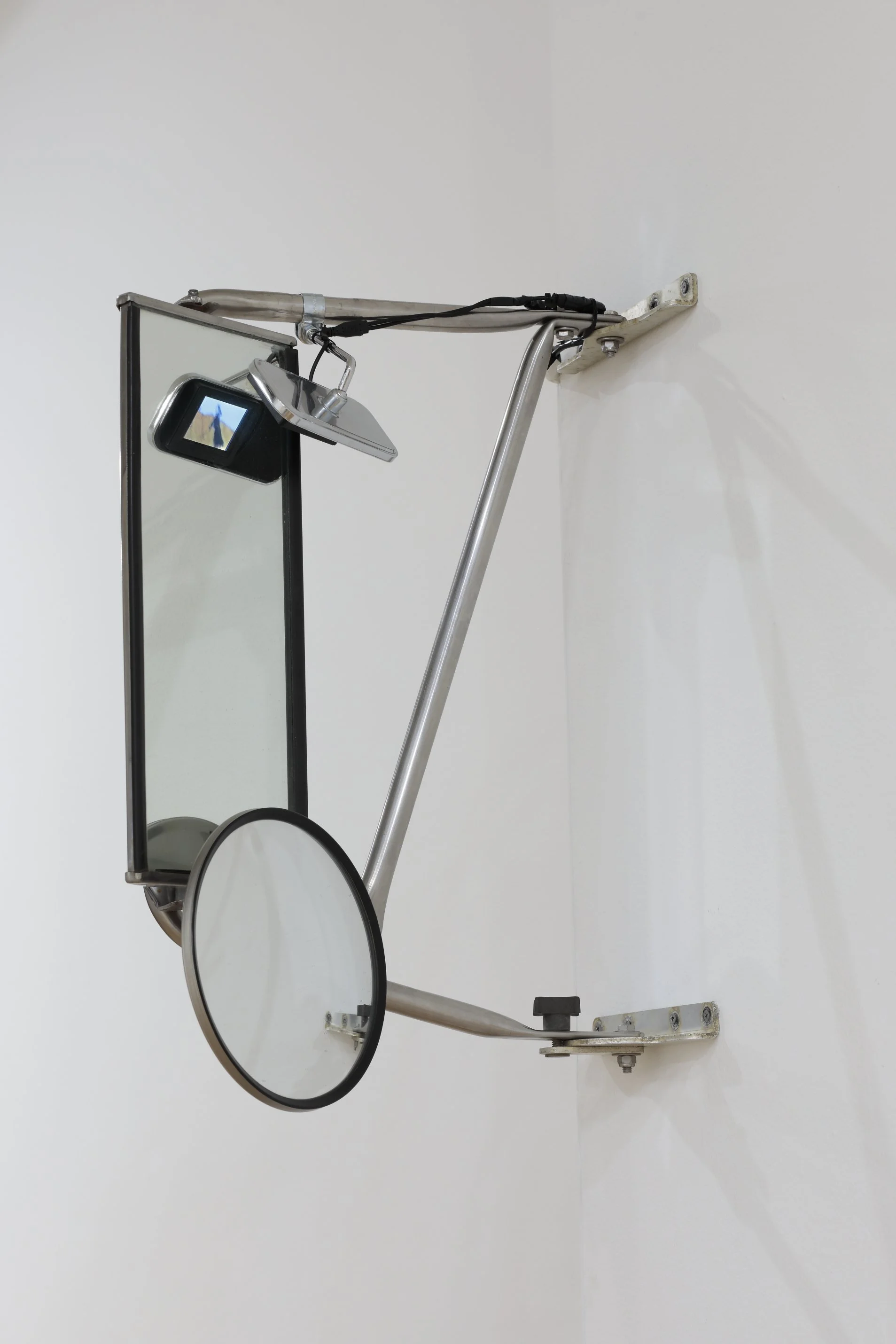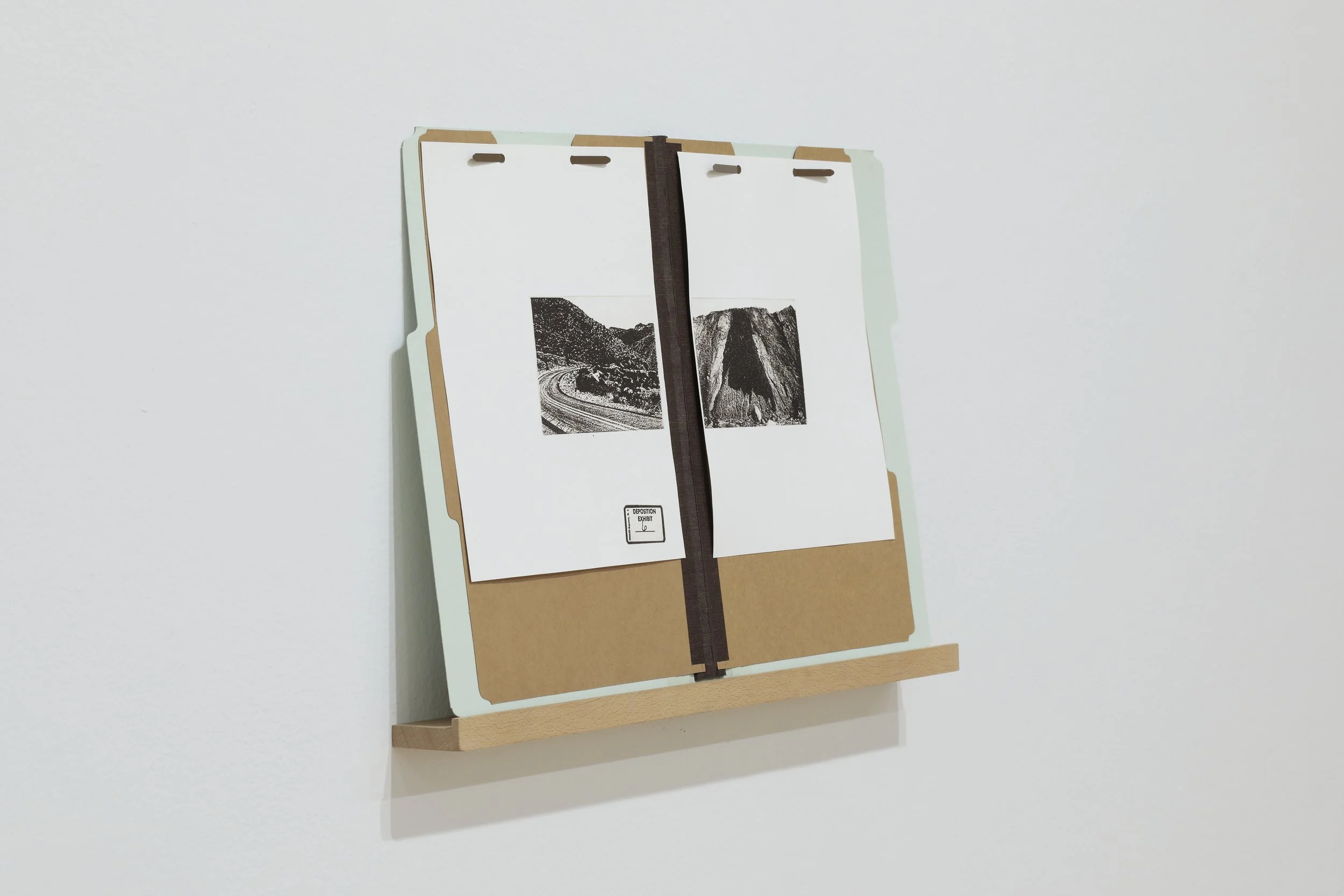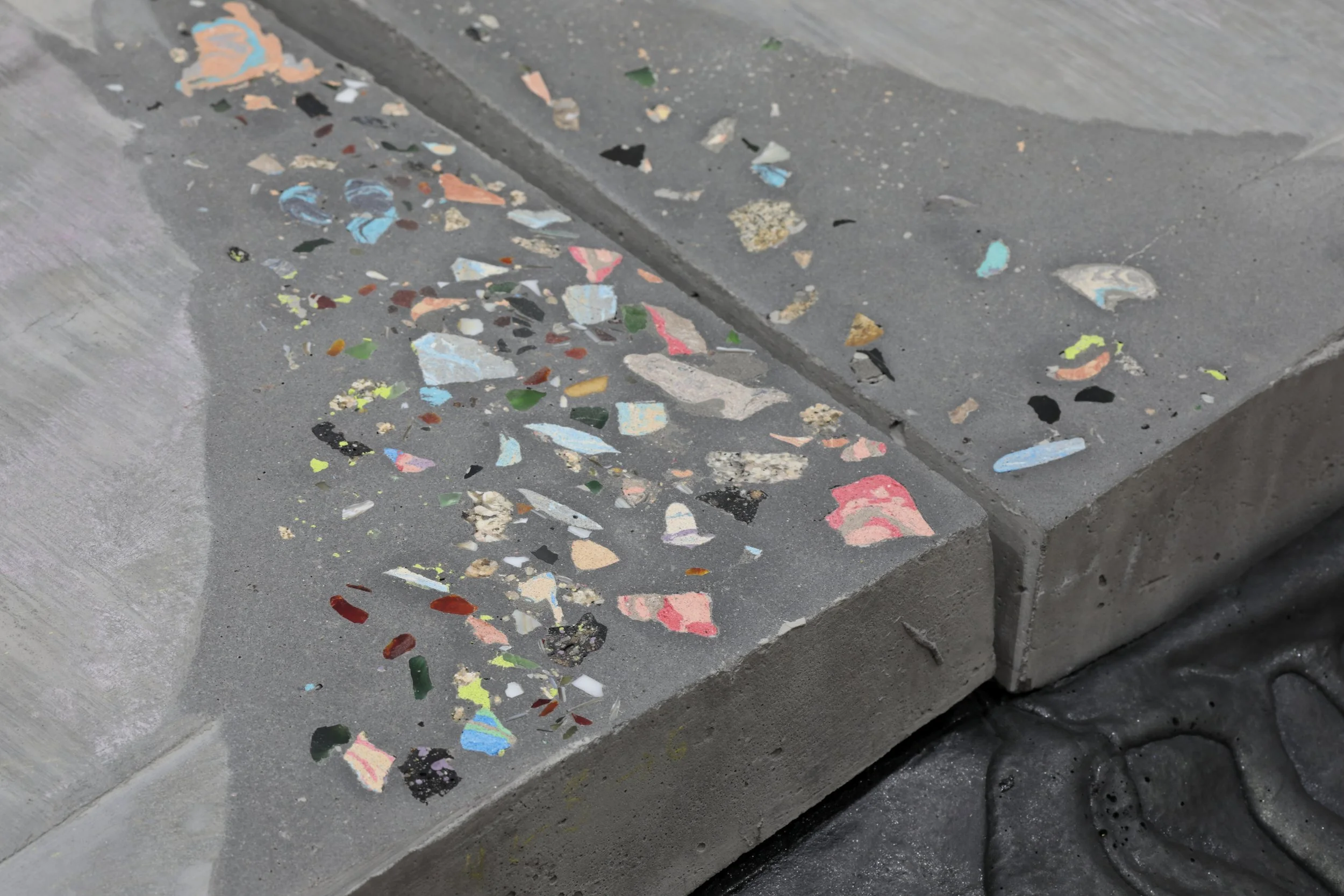TITLE: Active-Intermission-Composite-Artifact (AICA)
ARTIST: Lily Cox-Richard, Vesna Pavlović, Jonathan Boutefeu and Marina Pinsky
LOCATION: 1708 Gallery, Richmond, VA
DATE: 03.05.2021 - 04.24.2021
TEXT:
Active-Intermission-Composite-Artifact (AICA) includes sculpture, video, and photography from Lily Cox-Richard, Vesna Pavlović, Marina Pinsky and Jonathan Boutefeu. An intermission is an active pause in which the narrative presented can be examined and the audience can contemplate what is to come based on what has already played out. It is an event that contains multiple trajectories and the possibility to construct new narrative arcs beyond the confines of the initial story. This exhibition is an extended intermission. Shattered, re-composed and unbridled rearrangement of contexts and legacies are prevalent in the work and practices of the artists in AICA. Similarly, many contemporary art institutions are confronting the crumbling conventions upon which they were built and how recent crises will impact their futures. Instead of defining a future of how or should art be exhibited, contextualized, and historicized what we can learn from these artists by asking: Upon what platforms are politics conveyed in exhibition of art and artifacts? Within what buildings? Maintained by what cultural constructs? It is from this pause and consideration we can approach the next act.
Lily Cox-Richard
In AICA Cox-Richard’s work draws from her ongoing interaction with materials that undergird canonical art and cultural histories. Her concrete sculptures, reminiscent of fractured sidewalks, are made of aggregate materials often collected from sites of their intended exhibition. And documentation-oriented and found objects like archival images and a semi-truck rear view mirror quietly trace personal journeys, while prominently cultivating new versions of common artistic narratives. Quasi-artifacts are points of departure like classical statues of female bodies in museum education departments to the site preservation of events considered part of Land Art and its presumed authors. Through her own act of material erosion and institutional excavation, she exposes the overlooked composite experiences that make up cultural legacies—their material baggage. Recasting dominant, gendered narratives within art and material histories, Cox-Richard unveils how institutional value systems are often perpetuated by investment in consistency in art history over care, respect, credit, and the sharing of resources.
Vesna Pavlović
Pavlović’s photographic series “Collection/Kolekcija” examines the power dynamics deployed through the exhibition of art collections in two buildings that represent political and economic regimes—specifically the Palace of Federation, the former executive branch building of Yugoslavia, in Belgrade and the former Chase Manhattan Bank in New York City. This new installation of photographs and 35mm slide projections document not only the artworks in the respective collections but the physical, interior context within which they existed and circulated. Through this framework, the images diagram the intended function of these art collections in the post-WWII era where anti-Stalinist, socialism of Yugoslavia and capitalism of the United States were extolled. JPMorgan Chase explains in its collection’s mission, “Art at Work reflects and aligns with the firm’s 21st-century business principles and priorities: diversity, innovation, technology, sustainability, creativity, and excellence.” And the Tito administration saw the collection as a driver against fascism. The collections are seen in states of suspension, without viewers, and in many ways are indicative of the indecisive moments that occur in the movement between different political administrations and ideologies.
Marina Pinsky and Jonathan Boutefeu
Pinsky and Boutefeu’s performance was conceived at the former home and studio of Constantin Meunier—now the Musée Meunier, dedicated to the exhibition of his work. A prominent Belgian social realist artist, Meunier, to contested reception, sought to depict the lives of laborers, industrialization, and the heroism of peoples in plight in the early 20th century. Within this institutional setting Pinsky and Boutefeu question the intention of how contemporary labor and leisure are presented, and mine the ways in which fashionable subcultures grow from the varying levels of class mobility. In the performance, skilled skaters donned uniforms made of composite fabrics and embroidery resembling UHaul packing blankets and roller skates constructed from iconic seat fabrics from the Brussels tram system and skated their way through the museum and a public skatepark. The work points to the shift from public transportation as a capitalist infrastructure to the ride-share world of neoliberalism. Through conflating the inadequate hierarchical categories of art and fashion they undo conventional institutional attempts to compress social narratives into singular moments. Axel Van Hoof and Cecile Gentili designed the roller skates, and Natacha Della Mese and the Textile Lab in Tilburg collaborated on the uniforms. The roller skaters were Charlotte Bucaile and James Convent.
PROGRAM:
Active-Intermission-Composite-Artifact on ext.1708 Projects
An online extension to Active-Intermission-Composite-Artifact is on view at ext.1708gallery.org. This adjacent format provides an alternative context by presenting the artists’ documents, publications, and processes and highlights images and videos of specific works from the exhibition.
Vesna Pavlović: Stagecraft
Book Signing and Conversation
Tuesday, April 20, 2021
Artist Book Signing at 1708 Gallery: 5 - 5:45 pm
Conversation with artist Vesna Pavlović, book contributor Dr. Jordan Amirkhani, and curator Park Myers: 6 - 6:45 pm (on Zoom)
Vesna Pavlović: Stagecraft features four extensive bodies of the photographer's work, spanning from the early 2000s to today—photographs of the Yugoslav socialist modernist hotel spaces from her internationally recognized series "Hotels"; photographs of the ceremonial space of the Yugoslav Presidential Palace in Belgrade from the series "Collection/Kolekcija" and the recent "Fabrics of Socialism" and "Sites of Memory" series exploring the archives of the Museum of Yugoslav History. The book includes critical essays that contextualize and expound on Pavlović's unique treatment of the photographic medium, in which a photographic moment is expanded to include the conditions of image making, production, documentation, and representation. Available for purchase here.
Dr. Jordan Amirkhani is a Professorial Lecturer in Modern and Contemporary Art at American University in Washington, DC. She received her PhD in the History and Philosophy of Art at the University of Kent in the United Kingdom, successfully defending her dissertation on the Franco-Cuban painter and polemicist Francis Picabia and his influence on conceptual artists of the 1960's. Since returning to the States in 2015, Dr. Amirkhani's academic scholarship and research has centered on artists working and exhibiting in the Southeastern quarter. Recent publications include exhibition catalogue essays and articles on the staged self-portraits of Apsáalooke Crow artist Wendy Red Star, the monumental paintings of Mequitta Ahuja, and the collaborative drawings of linn meyers. In addition to her work in higher education, Dr. Amirkhani is also an active freelance curator. Recent curatorial projects include Identity Measures, an exhibition of 23 New Orleans-based artists for the Contemporary Art Center, New Orleans’ Open Call exhibition in 2019; DIALOGUES, an inaugural exhibition of 32 artists for STABLE (a subsidized studio, gallery, and educational space in northeast Washington, DC) in 2019; and the Atlanta Biennial: Of Care and Destruction, a regional exhibition of over 32 artists and collectives working across the Southeast region, which opened to the public in February 2021 at the Atlanta Contemporary. Dr. Amirkhani has also established her voice as an art critic, and writes regularly for a variety of national and international contemporary art publications including Artforum, Art Practical, Art in America, Daily Serving, X-Tra, Baltimore Arts, and Burnaway.org. Her emphasis on contextualizing contemporary art and artists working in the American Southeast garnered her a prestigious Creative Capital/Andy Warhol Foundation 'Short-Form' Writing Grant in 2017 and three nominations for The Rabkin Prize in Arts Journalism in 2017, 2018, and 2019.
